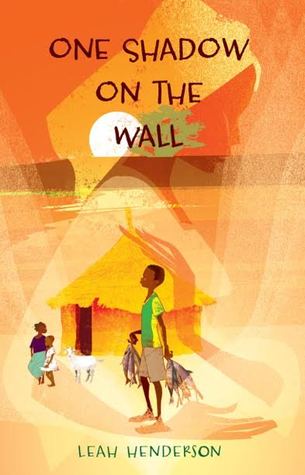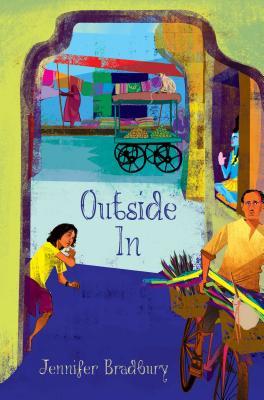Anyone who knows me or reads this blog knows that I LOVED LOVED LOVED The Farmer and the Clown by Marla Frazee from the minute it was published. I am a HUGE Marla Frazee fan and love all of her work. Walk On! and The Farmer and the Clown are definitely two of my favorite picture books.
So I was VERY excited to read that this wordless book, The Farmer and the Clown, was going to grow into a trilogy! What a treat! I couldn't wait to get a copy.
Then, I saw the title of the second book and I worried: The Farmer and the Monkey.
I have only recently started to pay attention to monkeys in children's literature. Edith Campbell led a Highlights Foundation workshop that I attended last year where she shared the problems with anthropomorphized monkeys in children's literature. She writes a bit about it here. The idea was new to me then (which in itself is a problem I take full responsibility for) and although I still don't completely understand it to the extent that I should, I can now see it as a huge problem.
If this is something you need to learn more about, Elisa Gall at Reading While White also wrote about this over 2 years ago in the post Knowing Better, Doing Better.
So, back to The Farmer and the Monkey, the sequel to The Farmer and the Clown.
I ordered the book the day it came out. Even though I knew the issues with anthropomorphized monkeys in children's literature, I was hopeful. Very hopeful. I trusted that maybe since this was about a circus, it would be okay. As I said, I LOVED The Farmer and the Clown and I really wanted to LOVE this one too.
My hope disappeared after reading just a few pages of this new book. This adorable monkey caused trouble the minute he entered the farmer's house. It was clear from the visuals early on that this monkey was a troublemaker and misbehaved often. This thread of this character as "troublesome" and "behavior problem" works through the whole book. When I thought about this as related to Edith Campbell's work, I couldn't help but see how this was a problem. The racist stereotype of Black children as troublemakers is something that this book amplifies.
I was compelled to dig a bit more. I went page by page in the book and here are some problematic things I noticed:
- The monkey appears to me to be sneaky. Before he even enters the farmer's home, he is sneaking around, climbing on the roof, peeking in windows.
- The monkey is only in the farmer's house for a few minutes before the farmer sends him away--kicks him out of the house in the dark night. Alone.
- The monkey is left alone in the night and is buried in snow while the farmer presumably sleeps peacefully, not checking on the monkey through the night.
- The next morning, the farmer sees the monkey in the snow, (seemingly waiting to be saved), feels sorry for the monkey and brings him in and cares for him. but the monkey still causes immense trouble on the farm and although the farmer doesn't seem to enjoy the monkey, he is more patient with him.
- The farmer sends the monkey off on his own to meet the train/his circus family, with a full picnic basket strapped to his back so that finally the farmer can rest peacefully on a haystack. The ending shows that the farmer's life is much better after he sends the monkey away.
Even after noticing these things, I was still a tiny bit hopeful. I remembered the clown in the first book being troublesome too, so I went back and compared the books, page by page, assuming I might see that the clown had been similar in character but that I forgot. Here is what I noticed:
- The clown visibly presents as a white child.
- When the farmer sees the clown all alone, he immediately takes him in and cares for him, holding his hand as they walk to the farmer's house. The clown seems compliant and happy to have the farmer as a friend almost immediately. This is a huge contrast from the monkey, sneaking in and causing trouble immediately and the farmer becoming flustered.
- In the home, the little clown is sweet and compliant. He does everything the farmer does.
- The farmer is so loving toward the clown that the clown sleeps in the farmer's bed while the farmer stays awake making sure the clown is comfortable. In contrast, the farmer sleeps in his own bed while the monkey sleeps on the floor in a small picnic basket, or even stays awake at night while the farmer sleeps.
- The clown was NEVER kicked out of the farmer's home. Instead the farmer did everything he could to help the clown feel welcome and to be comfortable.
- The farmer works hard to entertain the clown and to make sure he is happy. The clown also appears to be VERY helpful with chores on the farm.
- In the first book, the farmer and the clown go on a fabulous picnic using a full picnic basket as they wait for the circus train. They eat together under a tree. When the train arrives, the farmer holds the clown's hand and waits until the family comes out and greets him. The farmer and the clown have an emotional goodbye that is filled with hugs and love. The farmer seems to keep the clown's hat to remember him.
- In contrast, the monkey is sent on his own, loaded down with a heavy picnic basket that they packed with food. Instead of hugs and love, the farmer shakes the monkey's hand and sends him off, without enjoying the meal together, never making sure he gets where he is going.
- The farmer appears relieved when the monkey is gone as he rests on the haystack.
After learning from Edith Campbell and others, this is the first time that I have actually SEEN for myself -- without someone else pointing them out -- the racist stereotypes and the problems with anthropomorphized monkeys in a children's book. When I look at these two characters critically, I now see a sweet white child and a troublesome monkey. I see too many anti-Black messages in this book to look away. I am not the only one who has concerns about this book. Michelle Knott also mentioned her concerns in a recent blog post.
It is not my intent for this post to end up starting a conversation about this specific book, but instead for it to act as a call for all of us who work with children and children's books to commit to learning, understanding and critically analyzing books with monkeys and to understand the problematic history of these images.
I will continue to be a huge Marla Frazee fan even if I cannot be a supporter of this book. I am hoping that that authors and publishers take this issue of monkeys in picture books more seriously in the future.
If you'd like to learn more, here are a few things I've read:
The Disturbing "Monkey Business" of U.S. Black-White Race Relations at Teaching Tolerance
Tell Knopf: Stop Publishing "Monkey" Book Series by Marc Brown at Social Justice Books
More from Dr. Edi Campbell.




















